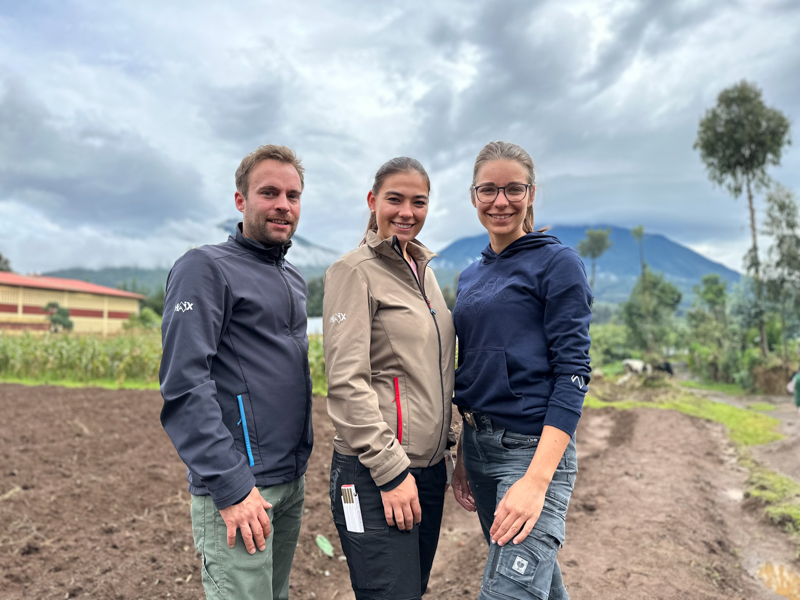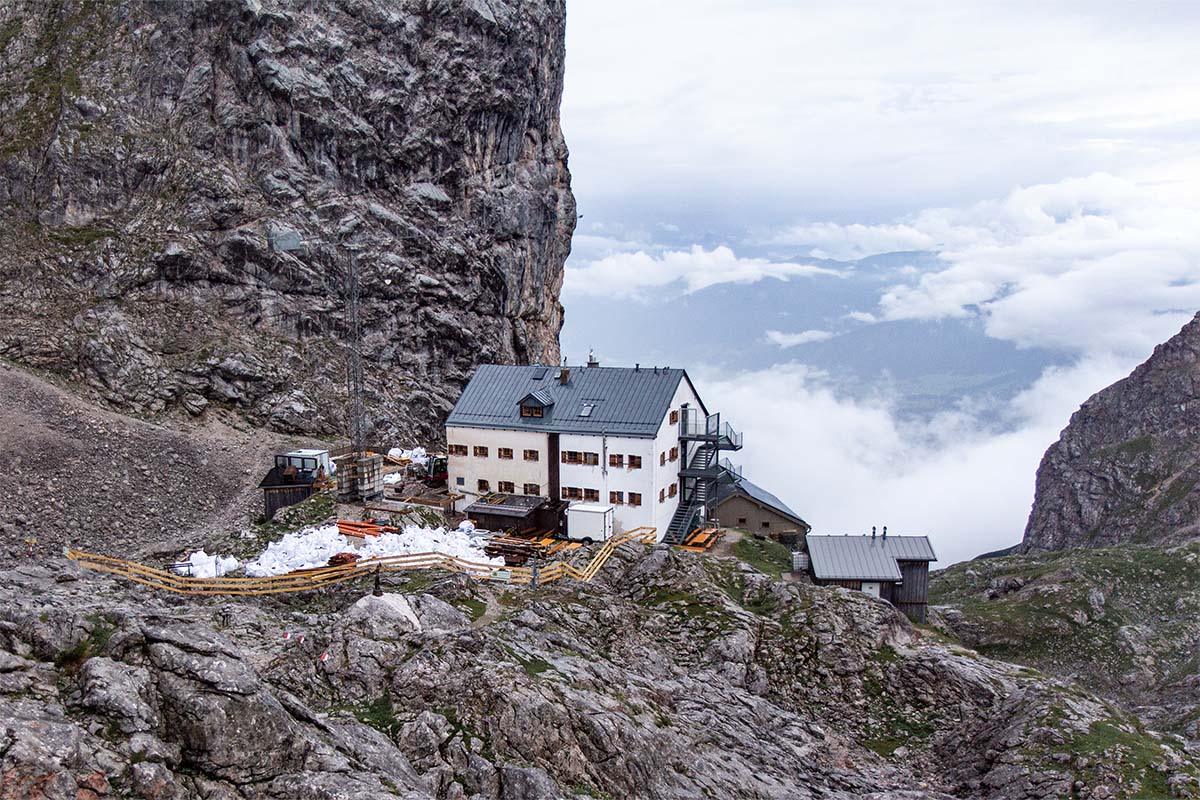With the forest workers between Dachstein and Planai
Thomas Moosbrugger cites an old saying from his Styrian homeland: “Beech trees have the devil in them. And the devil never sleeps.” 36-year old Thomas is an experienced lumberjack who specializes in working on steep mountain sides.
Despite exercising all necessary vigilance and caution, Thomas Moosbrugger has had a number of near misses whilst dealing with hardwood trees on the slopes. “But that was quite a while ago now,” he says in his thick Styrian accent. Thomas smiles behind his curly beard. “One time I hurt my knee, and the other time it was my hip. But everything turned out well in the end.” Forestry has always been much more than just a job for Thomas. Three years ago, he truly made his work into a profession by going self-employed and investing a large amount of cash in machines and logging equipment. Since this time, he has been trawling his way through mountain forests on behalf of their owners. He mainly works on and around the Planai, which is home to Schladming’s ski racing slope, famous and notorious in equal measure.
The peak of the Dachstein, a mountain which rises to 3,000 meters, is clearly visible to the north. We are in the south of the Lower Tauern mountain range. The time is 6 am. Thomas Moosbrugger and his loyal employee Bernhard, whom everyone calls Bernie, have already been hard at work the day before. They have pulled the tower for their cable winch up the narrow forest track, negotiating bend after bend and ascending several hundred meters over the final asphalted sections of the path.
The winch needs to be secured with at least four steel cables before it can be used to heave hugely heavy trees up a cutting through the forest. They are dealt with by a digger with a harvester attachment once they reach the top. The hawsers used to secure the cable winch are immensely heavy in themselves and need to be fixed in place by hand. “There is no machine which can help you,” says Bernie. This is a back-breaking job. Meter by meter, three men drag one securing cable after another up the escarpment. Sometimes they need to work on their hands and knees. Afterwards, Bernie describes this as “completely normal terrain.” The estimated gradient here is 60%, and he has worked on other alpine slopes which present an entirely different prospect. Shortly after 10, four cables have been stretched between four mighty trees and the winch tower. “Secure!” calls out Bernie. He clatters his way back down, seemingly with half of the mountain sticking to his boot heels. All they need to do now is pull the transport cable down and secure it. Then it will be time for a snack. “I think we can say we’ve earned that,” Bernie jokes. He is from the Enns Valley. His eyes peek out mischievously from under his sweat-soaked cap. Breakfast tastes twice as good when you are out in the forest. They tuck into finely smoked salami and a hunk of hearty farmhouse bread. Good solid food is needed when you are up in the mountains, but the job itself is certainly no picnic.
Lumberjacks are seldom required to climb over really big tree trunks. But some of the branches which litter the forest floor once felling has taken place are as thick as a person’s arm, and walking between them can be at least as devilish an experience as taking a chain saw to a beech tree. It is wet, slimy and extremely slippery around here. The spikes on the forest workers’ shoes bore into the wood and bark. No one can maintain a firm foothold without getting a proper grip. Operating a chain saw is just one of the problem areas in this regard.
The power saws are fired up again. They left a few beech trees standing yesterday, “because it was already very late.” But the devil must be at work again. A trunk splits just as Thomas’ saw blade is right in the middle of it. There is a bang like the sound of a plank crashing down onto bare floorboards. The rift in the trunk is big. It extends upwards for three meters and is wide enough to put your arm through. Thomas wastes no time in putting some distance between himself and the tree. In fact, Usain Bolt could probably not have moved faster. Experience, respect and caution are now required. Thomas and Bernie know what needs to be done. 10 minutes later, the “devilish” beech is rapidly thudding its way down the slope. Everything has turned out well. “You simply need to be confoundedly careful when you’re dealing with beech trees,” states a relieved Thomas Moosbrugger. He adds that he would “ten times rather” cut spruces and firs. He is, however, unable to exert any influence of the kinds of trees which grow in the mountain forests around Schladming. But he can take action to make a dangerous job safer. The key factors are respect for nature, professional experience and good work equipment. “The very best boots are just about good enough.”











